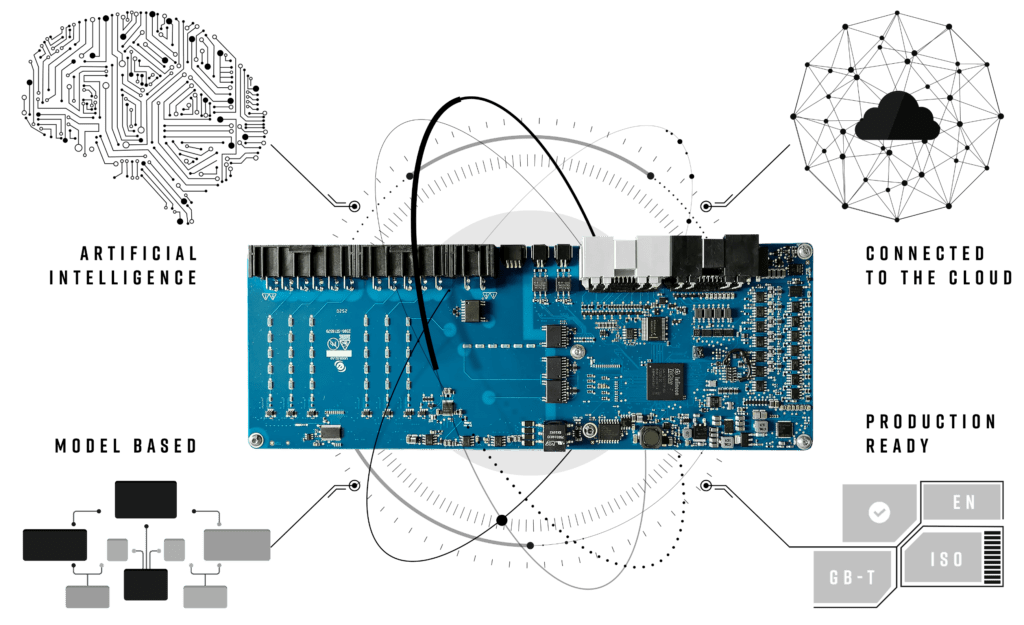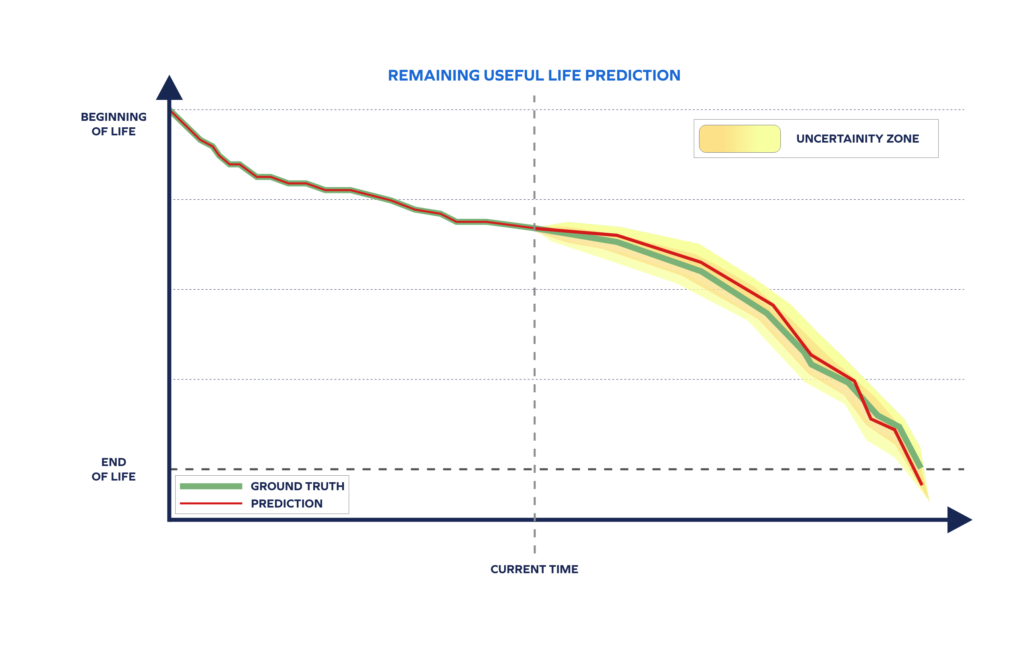The Future of e-Mobility is here
With significant advancements of the lithium-ion batteries over the last decade, the move to electromobility is unstoppable and soon the electric and hybrid electric vehicles will replace all existing passenger and commercial vehicles. This move has already been confirmed by many OEM’s declaring in their roadmaps to become all-electric brands within this decade.
Despite the advancements at the chemistry levels, which are improving the cost and energy density of the battery packs and therefore making this technology more widely adoptable, there are still many challenges that need to be overcome in order to harness the benefits of this technology in the final products; They must work safely, efficiently and reliably over a long period of time. At the cell level the main challenge is to make sure that the cell operates within its safe limit, while trying to minimise the safety margins to preserve the high energy density advantages. At pack level the main challenge is to make sure that all cells are operating in a harmonised way, so that they equally share the power load and experience homogenous degradation. These challenges are overcome with the use of the Battery Management System (BMS).
Battery Management Systems (BMS)
The BMS monitors and controls the charge/discharge of batteries. It ensures that the battery residual energy is optimally used, the battery does not deep discharge or overcharge, and the individual cell charge levels are balanced. In short, the performance of the battery with respect to its durability, usable energy density and charging speed depends on the performance of each cell and the BMS. The key component that determines the BMS performance is its software, which realises complex functions like estimation of the state of charge and state of health. These two functions alone are very useful for ensuring the optimal operation of the battery pack at a given time, but don’t give any insight/prognosis into how quickly the battery is going to degrade (remaining useful life), which with mass technological adaptation is becoming a key question cell suppliers, OEM’s and customers are hoping to get answers to.

The Challenge: Remaining Useful Life (RUL) Estimation
The RUL of the battery depends on how the battery has been used since it was produced. This, among many other factors, highly depends on the final customer driving style and usage patterns, the ambient temperatures the pack is exposed to, charging habits, etc… Comparing the battery’s behaviour to laboratory-generated cycling data is not sufficient to present a true picture since real-world usage profiles and operational conditions are complex and are typically not known in advance of the battery’s operation.
For this reason, the existing packs are often unnecessarily oversized, so they last longer, and current production BMS are calibrated conservatively which in turn preserves the life of the battery throughout the expected warranty duration of the vehicle, which is typically 10 years. Furthermore, BMS operate to restrict the battery charge rate, even when faster charging is possible and may bring significant benefit to the vehicle user. There are therefore significant gains to be made if the RUL of the battery could be accurately estimated. Introducing RUL into the BMS software will undoubtedly improve the battery performance and vehicle owner’s experience. These gains are likely to come from emerging techniques in the fields of Machine Learning, Artificial Intelligence (Automotive Safe AI®), Cloud Applications, and physics-based battery models embedded in automotive grade control systems, which very few companies are currently working on.

Improved Management – Combining Physics Based Models and Machine Learning
Eatron, a fast-growing UK company dedicated to making ‘software defined vehicles’ a reality for OEMs worldwide, uses its physics-based modelling techniques and expertise in artificial intelligence (AutomotiveSafeAI®) to accurately predict the Remaining Useful Life (RUL) of the battery. This control technique replaces static look-up tables with an embedded, dynamic software model of the battery system, and combines this model with advanced machine learning (ML) techniques in a hybrid edge/cloud configuration, which runs at the heart of Eatron’s BMS product called BMStar®.
Can Kurtulus, Eatron’s CTO, draws a comparison between this new approach to RUL and BMS with improvements achieved in vehicle weight and durability. “In other areas of vehicle design, accurate digital simulations have helped to eliminate the need for over engineering,” he says. “This has brought down cost and weight in a virtuous circle. Our approach to BMS is similar, except we will be embedding the model in the control system of every battery pack and applying it in real time throughout the vehicle’s life, not just during the design stage.”
A BMS at The Edge, Connected to The Cloud
The embedded software components within Eatron’s BMStar® work at the edge and are designed to have a cloud counterpart with integrated connectivity and analytics. These enable over-the-air (OTA) updates and continuous and adaptive software improvements to achieve superior performance and reliability over the lifetime of the vehicles. This approach maximises customer benefits such as fast charging and range while still meeting warranty and durability targets. Bilateral data exchange enables model parameters on the BMS to be updated, leading to the possibility of improved real-time state estimation in the vehicle as the battery ages. In partnership with Warwick Manufacturing Group (WMG), Eatron has won funding from the Faraday Battery Challenge for their Cloud/Onboard Battery Remaining useful life Algorithm (COBRA) project.
Cloud/Onboard Battery Remaining Useful Life Algorithms (COBRA) Project
The COBRA project has created new algorithms which will estimate the Remaining Useful Life (RUL) in an Electric Vehicle (EV) battery. Funding from the Faraday Battery Challenge, which has been supporting the UK’s battery companies since 2017 to produce batteries that are more cost effective, more efficient, charge faster and can easily be recycled, has brought the project forward by 12 months.
This innovative project is combining advanced battery ageing models developed by WMG (Warwick Manufacturing Group) with Eatron Technologies’ own machine-learning-based approach to Remaining Useful Life (RUL) estimation from existing internal R&D work. The technology has been refined to a level of usability, reliability, and maturity that gives battery manufacturers and integrators the confidence required to enable mass adoption and has already seen huge demand from potential customers.
Undertaken by a team of highly experienced engineers with a track record of delivering state-of-the-art software and system solutions for electrification projects within the automotive sector, project COBRA has:
- Developed a unified physics and machine-learning-based approach for battery RUL estimation with high accuracy of over 90%.
- Integrated a developed solution in automotive-grade BMS hardware.
- Integrated a solution into cloud-based platforms for fleet operation services.
The COBRA project offers the opportunity to be first-to-market with an accurate RUL algorithm that can be implemented in a real-world BMS. The modular structure of Eatron’s technology platform allows fast, flexible configuration of new applications at a price point that is well-suited to low volume programmes.
If you would like to join Eatron in helping in the global fight for the environment by making EV’s more practical for fleet operators and drivers around the world, then please contact us via info@eatron.com or fill out the form below.
Krzysztof Slosarczyk, Product Manager of BMS @Eatron Technologies
